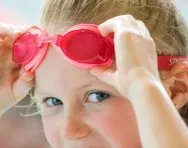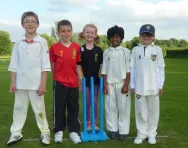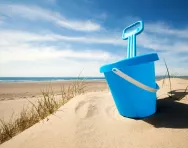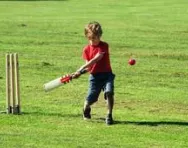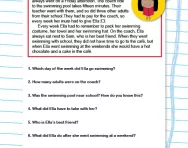Important update from TheSchoolRun
For the past 13 years, TheSchoolRun has been run by a small team of mums working from home, dedicated to providing quality educational resources to primary school parents. Unfortunately, rising supplier costs and falling revenue have made it impossible for us to continue operating, and we’ve had to make the difficult decision to close. The good news: We’ve arranged for another educational provider to take over many of our resources. These will be hosted on a new portal, where the content will be updated and expanded to support your child’s learning.
What this means for subscribers:
- Your subscription is still active, and for now, you can keep using the website as normal — just log in with your usual details to access all our articles and resources*.
- In a few months, all resources will move to the new portal. You’ll continue to have access there until your subscription ends. We’ll send you full details nearer the time.
- As a thank you for your support, we’ll also be sending you 16 primary school eBooks (worth £108.84) to download and keep.
A few changes to be aware of:
- The Learning Journey weekly email has ended, but your child’s plan will still be updated on your dashboard each Monday. Just log in to see the recommended worksheets.
- The 11+ weekly emails have now ended. We sent you all the remaining emails in the series at the end of March — please check your inbox (and spam folder) if you haven’t seen them. You can also follow the full programme here: 11+ Learning Journey.
If you have any questions, please contact us at [email protected]. Thank you for being part of our journey it’s been a privilege to support your family’s learning.
*If you need to reset your password, it will still work as usual. Please check your spam folder if the reset email doesn’t appear in your inbox.
Teaching your child to swim
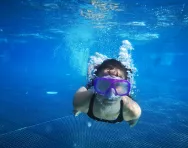
Swimming at all ages
Swimming is on the syllabus for all children in the UK, and they have to be able to swim 25 metres by the time they leave primary school. But having the ability to swim one length when they're 11 isn't too useful when they're five or six and on holiday by the sea in Greece. This is why many parents supplement school swimming lessons with trips to the local pool.
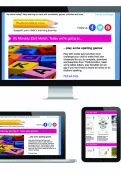

Start a unique learning programme!
- Weekly programme for each school year
- Worksheets sent direct to your inbox
- Keeps your child's learning on track
It is never too early to take your child to the pool and many public baths run courses for babies and toddlers. “We have lessons for one month olds upwards,” says Gail Butlin, the swimming lessons coordinator for Castle Vale Swimming Pool in Birmingham.
Up until the age of four it's more about gaining confidence rather than learning strokes. “For the younger ones we do exercises with nursery rhymes,” she says. “The important factor is to make the water fun for the kids.”
Finding a swimming class for your child
Leisure centres are the obvious place to start when looking for swimming classes for your child and Roger Millward, chief executive of the Swimming Teachers' Association, believes all children should be taught by trained instructors: “A great deal of damage can be caused if children aren't taught by professionals, from muscle injuries to, of course, submersion.”
Submersion is the technical term for drowning and, according to the Royal Society for the Prevention of Accidents, 40 under-15s died from drowning in 2002, making it the third most common cause for accidental death in this age group. It's certainly a compelling reason to make sure your children learn to swim – and are taught properly.
Positive approaches to swimming
Swimming lecturer Rosemary Fletcher-Turk believes parents have a duty to approach swimming positively. “If a parent starts the lesson by saying, ‘If Tommy doesn't like it, just call me’ then Tommy is immediately going to think there's something not to like,” she says. “Whereas if a parent shows their child that swimming is fun and takes them to the pool for outings, not just for lessons, then the child is going to enjoy swimming.”
Learning to swim – the methods
“If a child starts swimming without armbands when they're too young, say two or three, they'll swim with an arched back. They don't have the muscle control to stay straight, and that's not good for their swimming or their development,” says Rosemary. She suggests that children learn to swim using the pool bottom, a parent, a teacher, floats and armbands – that way they never become too dependent on one method.
It's not just swimming ability that will help a child if they get into difficulties in the water – it's breath control and floatation, too. These are skills that a swimmer needs to learn whatever age they start, and although children pick them up more intrinsically the younger they are, they will learn them whatever age they start.
Child swimming need-to-knows:
- Look for the swim21 accreditation scheme at a swimming pool. That way you'll know teachers are qualified and the premises are also regularly inspected.
- Never choose a class with more than ten pupils in it.
- Classes can cost anything from £3-£5 an hour. They often come as part of longer courses and some pools offer free swimming between lessons for the duration of the course.
- Cameras are banned from public swimming pools.
- All certified teachers working with children must go through the usual police and vetting checks.
- All public swimming pools have trained lifeguards.
- Guidelines ask one parent to accompany every child under four, and no more than two four to seven year olds.
- Many public pools don't allow under-tens in unaccompanied.

